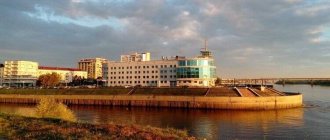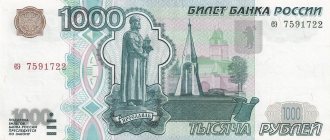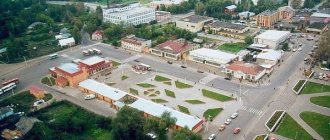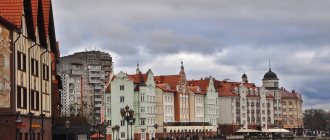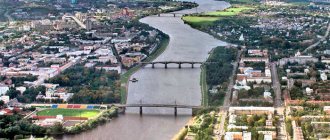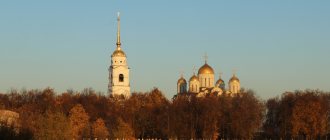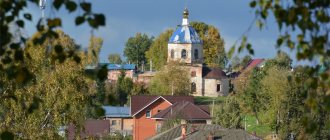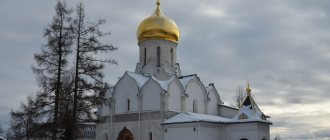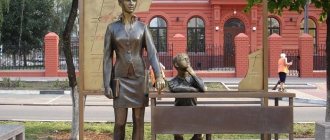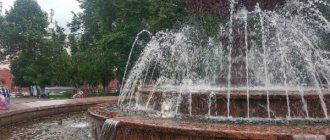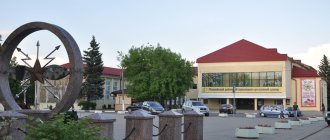The charm of the Russian province, seasoned with a rich historical past. This mix awaits everyone who decides to go to Tver. This cute and cozy town on the banks of the Volga will not be a revelation for those who are accustomed to template excursions and standard routes. Tver needs to be studied more carefully to see everything that its more than 10-century history hides. The first mentions of the city date back to the 12th-13th centuries. More precisely, the charter states that the year is 1135, and the chronicle indicates the year 1208. It turns out that Tver is older than Moscow. This fact gave historians a reason for jokes, such as the fact that the future capital still stood as a village in the swamps, but by that time a real city was already located here.
- Stepan Razin Embankment
- Cathedral of the Ascension
- Tver State United Museum
It is better to prepare specially for your visit to Tver by reading historical literature. Believe me, this will allow you to take a completely special look at its ancient streets, houses, architecture and monuments. You can walk around the city for quite a long time, constantly discovering something new. If you come for a short visit and don’t have much time, then we will tell you how best to plan your route and what is definitely worth seeing.
What to see in Tver in 1 day
The city is located on both banks of the Volga, but at the same time it is quite compact, which will be a definite plus for you. Moving between interesting objects will not take much time. The main points of tourist attraction can easily be visited in one day, if you do not delve into the study of the exhibitions of local museums and exhibition centers. It is best to start your introductory walk early in the morning so that you have time to see all the interesting things.
For example, Tver Kremlin
.
It is a must visit. This is generally the best place to start your acquaintance with the city. Nearby there is a magnificent example of 18th century architecture - the Imperial Travel Palace
, in the premises of which there is an art gallery.
From here, take a leisurely step in the direction of the Tver Academic Theater. Next, head towards Lenin Square and the Cathedral of the Ascension of the Lord
. The next point of your walk will be Sovetskaya Square and the Museum of Communications. You can reach it along the street, which is also called Sovetskaya. Along it you will go further towards the museum and exhibition center and two religious buildings. Not far from each other are the Catholic Church and the Cathedral Mosque, built in the New Moorish style.
From here it’s just a couple of steps to the park with the unusual name “Vokzal”. On its territory there are abandoned historical buildings, including the buildings of the provincial hospital of the 18th century. The architecture is in disrepair, but if you are interested in studying such objects, then you will definitely like it here. If you prefer attractions of a different kind, then straight from the Catholic Church follow the direction of the Novovolzhsky Bridge
. Along it you will cross to the other side of the Volga, where there is also something to explore. The Museum of Tver Life, the River Station and other interesting objects deserve attention.
Afanasy Nikitin Embankment
The river station is located on the Afanasy Nikitin embankment. From here you can go on a boat trip, but first you should take a walk and see the sights. This territory, called Zavolzhsky Posad, was inhabited and rebuilt since the 14th century. When all the wooden buildings burned down during the fire of 1763, the residents built stone houses here. In the mid-13th century, the Otroch Monastery was founded on the shore. In the 30s of the last century it was destroyed due to the reorganization of space. Of the monuments, only the Cathedral of the Assumption of the Blessed Virgin Mary remains. This is where the countdown of buildings located on the embankment begins.
The temple was built in 1722 in the Naryshkin Baroque style. In 1799-1800, its interior walls were decorated with paintings by icon painter Matvey Chelpovsky. In Soviet times, the cathedral was closed; its premises housed the exhibition halls of an art gallery. In 1994, the temple was returned to the Russian Orthodox Church, and its complete restoration was carried out, but in the period from 2005 to 2010, despite public protests, the ancient painting was completely destroyed. The temple is active and services are regularly held there. Nearby is the River Station, which occupied most of the former monastery courtyard.
On the embankment there is the Church of the Resurrection (Three Confessors). It was built in 1731. During Soviet times, the frescoes and two tiers of the bell tower were destroyed. In the 90s, restoration work was carried out, after which the temple was opened to the public. A monument to Afanasy Nikitin is erected in front of it. It was created by sculptors S.M. Orlov and A.P. Zavalov designed by architect G.A. Zakharova. The opening took place in 1955.
We recommend reading:
St. Petersburg - where tourists can go in the city and surrounding areas
A little further is the first building in Tver built in the classicist style. This is the house (No. 44) of the Zubchaninov merchants, in which at one time the Theological School was located. In the neighboring house there is an Art College named after. Venetsianova. There is a monument to submariners in the park on the embankment. The infrastructure of the park is conducive to walks; the park area has attractions and a small Ferris wheel. There is a stage area designed in the form of an amphitheater, 2 sports grounds and 4 children's playgrounds. On the Afanasy Nikitin embankment there are the Golden Plaza, Hyde Park, and Governor hotels.
The River Station building, built in 1938, is also of interest to lovers of architectural solutions of the Stalin era. It is located at the confluence of the city’s two main rivers – the Volga and Tvertsa. Today, restoration and restoration work is being carried out here (in 2022 the roof collapsed, then part of the rotunda collapsed). Cash desks are only open during the navigation period. Excursion boats depart from the pier.
Main attractions
Tver Kremlin
According to the tradition typical of ancient Russian cities, a fortress was previously located in the very heart of Tver. On its territory, outside the walls, temples, the prince's palace and the houses of noble gentlemen were erected. Around the Kremlin there were usually unprotected areas - posads. The same scheme was used here too. The problem is that we will no longer see the local Kremlin, in the form in which it originally was in the 12th century. Only certain sections of the fortress moat have been preserved. Now only from historical documents can we find out about its former size, how it changed and was rebuilt.
Imperial Travel Palace
The palace was built in the 18th century specifically for members of the imperial family. They traveled from St. Petersburg to Moscow and stopped here during the trip. The architecture of the building is classical with Baroque inclusions. The first member of the ruling dynasty to appreciate the decoration of the palace was Catherine II. At the beginning of the 19th century, the palace underwent significant reconstruction and acquired the status of a literary salon, which was very popular. In the post-revolutionary period, the palace became the venue for various meetings. Today, an art gallery exhibit is displayed here. It should be noted that the palace is an entire architectural complex, which, in addition to the main building, also includes outbuildings, the Palace Garden and other buildings.
River Station
Among the city monuments built in the Stalinist Empire style, we highlight the River Station. This is a rounded building surrounded by a colonnade. On the sides of the central part there are two pylons. The upper part of the building is a belvedere topped with a spire, which in previous years served as a lighthouse for passing ships.
At the time the station was built, river transport was in great demand. Automobile traffic between the cities of the Volga region was underdeveloped, and shipping played a major connecting role. From here it was possible to sail to Kazan, Yaroslavl, Nizhny Novgorod, Kostroma or other settlements located on the banks of the great Russian river. River transport operated actively until the end of the 80s of the 20th century. Nowadays it is used mainly by tourists. There is no longer regular passenger service, as in former times.
Although the River Station is considered a city landmark, its condition leaves much to be desired. Part of the building has already collapsed, and thickets have formed in some places. In summer, the sad picture is slightly hidden by the trees standing around. But in general, not much remains of the former grandeur of the building, which of course upsets both the residents of Tver and tourists.
Catherine's houses
Directly opposite the River Station, on the other side of the Volga, there is a row of small two-story houses that you won’t notice right away. However, in fact, these are significant historical monuments. They were nicknamed Catherine’s because it was the empress’s idea that a row of houses with a single façade appeared on this section of the embankment. This idea seemed fashionable to her, but local merchants did not like it. The series was not continued. They say that designers even regulated the number of windows in buildings. It was supposed to be equal to the number of letters in the empress's name. Allegedly, later, during Catherine’s journey along the Volga, the lights in the windows were lit in such a way as to highlight her name.
Under the very roof of the buildings there are round windows, and their appearance is no coincidence. It was the idea of local merchants, who came up with the idea of dragging goods delivered on barges through these openings. Directly from the ship, using a winch, they pulled bales and baskets into the house. Fast and convenient.
These days, Catherine's houses are not in very good condition. If local authorities do not take action to preserve the monument, it will most likely collapse, just like the River Station.
At the moment, some of the buildings are abandoned, some houses offices, and somewhere people live. The administration does not exercise any unified control, and the townspeople themselves have no interest in the facility.
House of the Voroshilov Riflemen
This house became the first city building built in the Stalinist neoclassical style. It housed the headquarters of the Kalinin Military District (Kalinin was the name of Tver from 1931 to 1990). Then, during the Great Patriotic War, the building was used as a hospital. Upon its completion, the premises housed the Academy of Chemical Defense Troops. Now the building is both a hotel and a dormitory for the local Military Academy. An interesting fact: the filming of the TV series “Cadets” took place in this house.
Starovolzhsky Bridge
This is the city's first permanent bridge. It was built in 1900, and its graceful spans immediately became a local landmark. In 1941, the bridge was blown up by Soviet troops, who were forced to retreat. This made it possible to slow down the advance of the enemy army. After the war, the building was completely restored. Images of the bridge, which is called one of the most recognizable objects of the city, are often placed on souvenirs. During the holidays, this architectural structure is illuminated, which makes it especially beautiful.
Stepan Razin Embankment
This beautiful embankment is located in Tver on the right bank of the Volga. It stretches for 1.2 km through the historical center of the city from the stadium to the City Garden. The first stone houses on this site began to be built in the middle of the 18th century. For the development of the embankment, the “solid façade” style, which was used in St. Petersburg, was used.
Today, Tverskaya embankment, named after the leader of the uprising, Don Cossack Stepan Razin, is a monument to urban planning. Many of the houses located on this street were originally one-story, but later second floors were added. In addition to the former merchant buildings on the S. Razin embankment, there are noble mansions, the “House of the Voroshilov Riflemen” - an architectural monument of the Stalin era, and the “Zvezda” cinema, built in the style of late constructivism.
Address: Stepan Razin Embankment, Tver, Russia.
Where to go for a walk in Tver
Stepan Razin Embankment
An embankment stretches along the right bank of the Volga, named after the leader of the largest uprising in the history of pre-Petrine Russia. It starts near the City Garden and ends at the stadium. Back in the 18th century, the first houses made of stone, built according to the “solid facade” principle, began to appear in this territory. This style was previously used in St. Petersburg, when development objects form a single visual structure. Initially, most of the buildings did not have a second floor; they were built on later. Now the embankment has the status of an urban planning monument.
Afanasy Nikitin Embankment
On the opposite bank of the Volga is the Afanasy Nikitin embankment. It is even longer and stretches for 2.5 kilometers. It starts at the river station and stretches along the river all the way to Artillery Lane. Previously, the embankment, which can be called one of the most recognizable places in Tver, bore different names. At first it was Zavolzhskaya, after the revolution it became Pervomaiskaya. It received its current name in 1991 in honor of the famous traveler Afanasy Nikitin. He was from Tver and became famous for being one of the first Europeans to reach India. The townspeople erected a monument to their illustrious fellow countryman on the same embankment. Nearby is the Church of the Resurrection, built in the early 18th century.
Trekhsvyatskaya street
Tourists are invariably interested in places with historical buildings. Trekhsvyatskaya Street is just one of them. Its history begins in the second half of the 18th century, but the main buildings that have survived to this day were erected at the turn of the 19th and 20th centuries. After the improvement, the street was closed to cars and became. It’s pleasant to walk along it, which is actually often done by both tourists and city residents themselves. Artists and musicians demonstrate their talents here, souvenir sellers offer to buy folk art items as souvenirs. While walking along Trekhsvyatskaya Street, you can stop by one of the local cafes, or just sit on one of the many benches in the shade of the trees. By the way, this is where all the main city holiday events are concentrated.
Sovetskaya Street
The main city street at the time of its appearance was called Ekaterininskaya, in honor of the then reigning Catherine II. After a certain time, the street was renamed, and it became Millionnaya. After the revolution, it was given a name that has remained unchanged - Soviet. There are many historical and architectural monuments here, for example, one of the ancient buildings of Tver - the House of the Noble Assembly. There are also modern buildings that can also arouse interest among tourists. The architecture of the local Catholic church, for example, skillfully combines features of the Gothic style and modernism.
Botanical Garden of Tver State University
The beautiful garden is located not far from the old River Station. It is now run by a local university. In the garden you can see an example of the excellent work of landscape designers. Flora collected from different parts of the world grow on 2.5 hectares. Plants form special displays that complement each other. There are still oaks and other trees planted here when the garden appeared at the end of the 19th century.
Tver: history of the city, summary
The history of Tver goes back more than 10 centuries, if we focus on the first mention in the chronicles (1135 in the charter and 1208 in the chronicles). Historians joke that when Tver was already a full-fledged city, Moscow was still a remote village in a swamp.
City Day is traditionally celebrated on the last Sunday of June, starting in 1135.
The city received its name from the Novgorodians in honor of the Tvertsa River; for centuries it did not change, only in Soviet times there was Kalinin. Another version is that the name was originally “Tverd” - a stronghold, a fortress on the Volga.
Coat of arms of the city The coat of arms of the city symbolizes the close connection between power and Orthodoxy. Tver is very rich in cultural and religious places - monasteries, churches, chapels, holy springs. The patron saint of the city is Mikhail Tverskoy, who once saved the city, but was then brutally tortured in the Golden Horde, for which he was canonized.
Another key figure is Afanasy Nikitin, a Tver merchant of the 13th century, who made an outlandish journey to India in those years and described it in his diaries “Walking across Three Seas.”
In the 12th-13th centuries, Tver claimed to be the capital of Ancient Rus', but could not compete in treachery with the Moscow princes. In the Middle Ages, Tver was a small but well-defended fortress at the confluence of the Volga and Tmaka, now it is the historical center of the city.
The next significant historical era for Tver is associated with Catherine. The Empress, on her trips from Moscow to St. Petersburg, stopped in Tver - a luxurious Travel Palace was built for her. Tver gradually changed its architectural appearance from wooden to stone; the city center was built up with remarkable merchant houses that have survived to this day.
Next is the imprint of the Soviet era, the era of Stalinism, the last years - Tver accepted everything and organically digested it.
To understand about Tver, its history and significance in the formation of the Russian state, it is not necessary to read heavy volumes of research by historians or literary scholars; a lot can be gleaned from ancient Russian literature.
Places of memory of the Circle
The name of Mikhail Krug is familiar not only to fans of Russian chanson and the legendary “Vladimir Central”, probably everyone has heard of it. The work of this performer has many admirers, both among ordinary citizens and among representatives of the criminal world, as well as law enforcement officers. His songs touched the soul and their content was understandable to ordinary people, representatives of various professions. And he himself, despite his success, remained a man who was not arrogant. Perhaps this is the secret of his popularity.
Monument to Mikhail Krug installed on Radishchev Street
. The monument causes some discontent among the townspeople, but not because of the personality of the singer. Tver residents treat him loyally, despite his openly criminal themes of his songs. They are dissatisfied with the very location of the monument, which does not really fit into the surroundings of the historical street.
In their opinion, the best option would be to place the sculpture at one of the points associated with the singer’s life. There are three such iconic places. The first is the house where the performer spent his childhood. The second is the house in which Mikhail lived with his family and was killed. The third iconic place is the Lazurny club
, in which the singer often gave concerts, and, by the way, it is here that an exhibition dedicated to the Circle is exhibited. It is not organized in the format of a museum, but fits very organically into the interior of the establishment. These are just a few display cases located in the club hall, right next to the laid tables for visitors. There are photographs hanging on the walls. Anyone who comes to the club to have a snack or have fun can get into this exhibition. It will be especially interesting for fans of the singer’s work, who will see some of his personal belongings and other interesting exhibits.
See the city of Tver from the Volga River
Between the two central bridges near the Zvezda cinema, go down to the pier and buy a ticket for the river bus and ride on a boat (40 minutes or 1.5 hours). And during this time, imagine all the exhausting burden of the barge hauler - the Tver region was especially “loved” by barge haulers for its numerous shallows and oxbow lakes.
Or you might be surprised how the picturesque banks of the Volga are built up with numerous military units, factories, factories and industrial sites, and not with beautiful houses and parks.
Or just relax, exposing your face to the cool breeze and watching houses, districts, and bridges float by.
Before this, of course, go to the cafe “Arzu” (popularly “Dead Horse”), popular among Tver residents, it is located on the side of the cinema, buy takeaway food, go to the slope of the shore and have a picnic on the grass, watching the seagulls and fishermen.
Temples and monasteries
Cathedral of the Ascension
Previously, there were wooden churches here, but they burned down and a new Orthodox church was built instead in the 18th century. The cult building has become a real architectural decoration of Tver. Its design perfectly combined white trim with ocher-colored walls. Under Soviet rule, the temple's valuables were confiscated, but the building itself was not damaged. True, it no longer performed a religious function. The Local History Museum was located here, and then exhibitions were held in the premises. Actually, due to the fact that the building was used in one role or another, its condition was constantly monitored. Nowadays, the temple again fulfills its original purpose. Since 1993, religious services have been held there, and the building itself has received the status of a cultural heritage site of federal significance.
Resurrection Church
Many people know this temple under a different name - the Church of the Three Confessors
. It is more famous, and it appeared because one of the premises of the temple is dedicated to the martyrs Guria, Samon and Aviva. The church was built in the first half of the 18th century with the money of the merchant G. Sedov. The style of architecture of the temple is a mixture of early classicism and baroque. It was formed after a series of reconstructions of the building. Initially, only Baroque elements were used in its construction.
Nativity of Christ Cathedral
On the coast of the Tmaka River there is the Nativity of Christ Monastery, first mentioned in the chronicles of 1514. There is no other information about the founding date of the complex. Initially, the buildings were made of wood, and, as often happens with such structures, they were periodically destroyed. Three centuries later, the complex was rebuilt and all the buildings became stone, forming a single architectural ensemble. The main church of the monastery, the Nativity of Christ Cathedral, appeared on this territory in 1820. After the revolution, the monastery was closed. Only recently was it returned to the church. However, the frescoes that decorated the interior of the cathedral have not been restored to this day.
Temple of the White Trinity
The oldest city temple, built in the 16th century, is located in the private sector. Surprisingly, it was not closed even during the Soviet era. Inside you can see beautiful paintings and ancient icons, and the iconostasis here has been preserved since the 17th century. The temple is active. Services are held here every day, and therefore it is ready to receive visitors every day. It’s worth coming here to experience all the historical value of the iconic building with a five-century history.
Resurrection Cathedral
The cathedral is located on the territory of the Nativity of Christ Monastery. It was built at the expense of the monastery itself, as well as with money allocated by the emperor’s family. The construction of the temple was completed in 1913 and was timed to coincide with the 300th anniversary of the reign of the House of Romanov. The author of the cathedral project was N.P. Omelyusty is an architect from St. Petersburg. When constructing the building, he adhered to the neo-Russian style. The decorative design of the temple was focused on the examples of architecture of Pskov and Novgorod. Now in the premises of the Resurrection Cathedral there are the relics of Sergius of Srebryansky - a revered Orthodox shrine.
Secret places of Tver that no guidebook will tell you about
Our guide to Tver shared with Dorogi-ne-dorogi.ru the secret places of the city. And we share this list with you.
We would like to note that these places are only for true connoisseurs of architecture. Those who are ready to go through a huge number of dirty streets in order to get to one single treasure house.
Art Khrushchev with shards
View this post on Instagram
Publication from Guide in Tver Veronica Ester (@gid_veronika_ester)
In the mid-50s of the last century, Tver builders approached the creation of standard Khrushchev-style panels creatively. Although the five-story buildings turned out to be typical, as throughout the country, they had shards of glazed ceramics mounted into the walls. This is unlikely to be seen in any other Russian city. Shards of dishes were pressed into the wall of one of these houses: multi-colored cups, plates, saucers and other fragments. Looks very cool. But for this miracle you will have to travel far from the city center.
Address: Nikolay Korytkov Avenue, 34.
House on Rybatskaya
Fragment of the facade of a house on Rybatskaya / photo by Veronica Ester
There is a luxurious house in the Art Nouveau style on Rybatskaya Street. It's tiny, but incredibly beautiful. Unfortunately, the house is now in a terrible state, although it is a cultural heritage site of regional significance.
It was built at the turn of the 19th and 20th centuries. The name of the architect is unknown. There is a version that the project belongs to engineer P.F. Bogomolov. Under the three high windows of the residential floor, near the ground, there are square windows of the semi-basement - now it is quite difficult to see them. The windows have stucco with floral ornaments and sandriks with locks. Find a window there decorated with a mascaron (female mask).
Address: st. Rybatskaya, 44.
Otto Martin House
The spire of the tower of this house can be seen from Stepan Razin embankment.
Otto Martin's mansion / photo by Veronica Esther
The house has an interesting history. It was built in 1910 for Otto Martin, a Moscow brewer of Austrian origin. The owner came up with the project in the Russian Art Nouveau style himself, introducing into it elements of the Gothic style popular in Europe. After the revolution, Otto left the country, and the house was used by various services.
In 2001, the building suffered a severe fire that destroyed the upper part of the structure.
The half-burnt house was saved by the Tver philanthropist and architect Chovushyan, who launched large-scale restoration work there. The house was restored according to Martin's surviving drawings. But there were no reliable drawings of the weather vane that once crowned the two-story octagonal tower with a steep hipped roof, so the rooster was made according to a drawing by Tver sculptor Andrei Komlev.
In 2022, a bronze sculpture of a rooster was placed on Trekhsvyatskaya Street - an exact copy of the weather vane installed on the Russian Art Nouveau monument.
Address: st. Kropotkina, 31A.
Museums
Tver State United Museum
This museum was opened in 1866 and previously bore the name of the Museum of Tver Antiquities. Now it is a whole structure that unites over three dozen local history museums. There are five main ones on this list. These are the Museum of Tver Life, the Architectural and Ethnographic Museum, the Saltykov-Shchedrin Museum, as well as two Pushkin Museums located in Torzhok and Bernovo. The main building of this impressive association is located in the center of Tver. Previously, the Tver Real School was based in this two-story mansion.
Now here you can get acquainted with the history of the region, with its nature, and see interesting exhibits such as products made from Rzhev-Staritsa flint. Also on display in this museum is the impressive Sterzhensky Cross. Here you can also see the ceremonial dress of Catherine II. The uniqueness of this wardrobe element is that, despite the strict palace regulations, the empress wore it more than once. She liked the dress so much.
Tver Regional Art Gallery
In 1866, the local historical and archaeological museum added several paintings to its collection. This moment is considered the beginning of the history of the Tverskaya Gallery. But only in 1937 did it become an independent organization. Now it has several regional branches, and the main collection is housed in the building of the Imperial Travel Palace. It is based on the creations of domestic masters of the 18th-21st centuries. Among them are paintings by such famous artists as I. Levitan
, V.
Serov
, A. Venetsianov. Sculptures created in the 20th century, as well as various objects of religious art, are also exhibited in the halls.
Museum of Tver Life
This is one of the institutions included in the system of the Tver State United Museum. It is located on the territory of the former merchant estate of the Arefievs. By the way, the house, built at the end of the 18th century in the Baroque style, was at that time the only such structure in Tver. Now this house, along with other buildings of the estate, forms an exhibition that reflects the life of local residents of past years. The museum also houses permanent exhibitions that present objects of decorative and applied art and folk crafts. If you wish, you can immediately familiarize yourself with the features of traditional Tver tea drinking.
Museum of Communications of the Tver Region
About a thousand items reflecting the history of Russian postal and communications are exhibited in this museum. It is located in a pre-revolutionary building, which formerly housed the city post office. The museum itself was formed in 1997, when local city networks celebrated their 100th anniversary. The exhibition includes radios from past years, archival photographs, unique documents, as well as samples of equipment that were equipped with postal services. Old telegraph and telephone devices are on display in the museum.
Goat Museum
Such an unusual museum appeared in the city in 2006, and the average person will find its focus strange. But if you know the history of these places, then all questions will disappear by themselves. After all, in the Tver region, these animals have been bred for a long time and tanned with skins. Local products were also supplied to the royal court. All the exhibits, and there are more than five thousand of them, are various figurines, toys or simply household items in the form of goats, goats or kids. There are even coats of arms of cities that depict these animals.
Entrance to the museum is paid, but if you are a bearer of the surname Kozlov, then you will not need a ticket. This is such an interesting feature of the establishment. An annual festival with the loud name “Kozlovs of all countries, unite!” is also held here. It can be accessed not only by owners of this surname, but also by anyone who is interested in such undertakings. The festival has a lot of original entertainment, such as jumping over a goat, or sawing logs on a goat. The souvenirs sold at this event are also special. For example, only here you can buy a medal “Honored Goat” (married couples often buy them).
Architectural and ethnographic open-air museum "Vasilevo"
The museum was organized on the impressive territory of the former Lvov estate, which is located on the banks of the Tvertsa River. Historical wooden buildings were brought here from different areas of the Tver region. Here they were restored and are now available for study by museum visitors. A total of 13 objects were collected, including residential huts, churches, and barns. You can also see here ancient boulders with crosses from the 11th century. Among other things, on the territory of the estate there is a park with a whole cascade of ponds, a greenhouse and the unusually beautiful “Devil's Bridge”. This amazing 100-meter-long structure is made of boulders and looks very impressive. In general, all locations of the museum are literally postcard views. It is not surprising that filmmakers also use this. One of the scenes of the famous “Night Watch” was filmed here.
Neighborhood
Domotkanovo estate. Valentin Serov Museum
Phone: Website: gallery.tver.ru Opening hours: Mon-Sun 10:00-18:00, May-September Thurs - 11:00-20:00 Cost: children - 10 rubles, students and pensioners - 20 rubles ., the rest - 50 rub. How to get there: by car or bus from Tver 23 km (30 min. - 1 hour.)
To this day, a 19th-century park with ponds and gazebos, a wooden house, a carriage barn, a bathhouse, and part of a manor house have been preserved on the territory of the estate.
Many famous artists were frequent guests here: Ivan Levitan, Vladimir Favorsky, Ivan Bilibin, Nina Simonovich-Efimova. But the estate was brought to fame by Valentin Serov, who spent the last 5 years of his life here.
Masterpieces that became classics of Russian painting were created here: “Girl Illuminated by the Sun”, “October. Domotkanovo", "Overgrown Pond. Domotkanovo”, works of the “peasant cycle” and illustrations for the works of Ivan Krylov.
The artist's memory museum was opened on the estate in 1965. The exhibition contains reproductions of his works, personal belongings, and a recreation of the interior in which the painter lived.
Vasilevo Estate
Address: Vasilevo village Telephone: Website: tvermuzeum.ru Opening hours: Wed-Sun 11:00-17:00, May-August - Mon-Sun 10:00-19:00 Cost: preschoolers - free, schoolchildren - 30 rubles ., students - 40 rubles, pensioners - 50 rubles, others - 100 rubles. How to get there: by bus or car from Tver 70 km (1-1.5 hours)
The Vasilevo estate is a museum of wooden architecture, where architectural monuments from all over the Tver region are collected: old barns, a fire station, a tavern and even a water mill. The most valuable exhibits are the Transfiguration Church and the Chapel of Archangel Michael, built in the first half of the 18th century.
Holidays and celebrations are regularly held on the estate. And sometimes they even make movies: the dark and light armies fought on the local “Devil’s Bridge” in the movie “Night Watch.”
This bridge is unusual: from the outside it seems to be built of large stones, but in fact inside it there are rooms lined with brick.
Manor Znamenskoye-Rayok
Address: Raek village Telephone: (order excursions) Opening hours: Wed-Sun 09:00-18:00 Cost: 100 rub. How to get there: by bus to the Maryino stop, from there 3 km on foot; by car from Torzhok 23 km (30 min.)
The Znamenskoye-Raek estate differs from others in its scale and is a huge complex surrounded by a park. It was built by Fyodor Ivanovich Glebov to amaze his second wife Elizaveta.
The estate is located in the village, and formerly the churchyard, Raek, the name of which is associated with the name of Catherine II. According to legend, when she saw the local beauty, she exclaimed: “This is paradise!” Indeed, the estate was built on a royal scale and was designed to receive imperial persons. There were even portraits of Russian tsars and queens hanging in the main dining room. All this was done to emphasize the family ties of the estate owners with the ruling dynasty.
After 1917, there was a rest home here, then a hospital, and then a dispensary for a local factory. Now the estate is being restored to open a luxury hotel.
Zavidovo National Park
Coordinates: 56.421481, 36.134960 Address: Tver and Moscow regions. How to get there: by bus or personal transport from Tver 74 km (1.5 hours), the nearest settlements are Kozlovo village and Dorino village
The history of Zavidovo Park dates back to the time of Ivan the Terrible, who came here to hunt in the 16th century. Later, Vladimir Ilyich Lenin followed his example. True, during one of his visits he was almost arrested for poaching.
In 1929, the park was transformed into a hunting ground, which was later visited by all the country's leaders. Under Yeltsin, it received the status of a national park, and the state complex built on its territory became the official country residence of the President of the Russian Federation.
Today the park covers an area of 125 thousand hectares and is included in the list of the most environmentally friendly places on the planet. Zavidovo consists of three parts: a reserve, a resort area and a residential sector. Tourists will find here cozy embankments, cafes, restaurants, spa complexes, horseback riding, hunting, unity with nature and an international class golf course.
Kalinin Front Museum
Address: Emmaus village, stop. “Boarding school” Phone: Website: tvermuzeum.ru Opening hours: Wed-Sun 10:00-17:00 Cost: children under 16 years old - free, students - 40 rubles, pensioners - 50 rubles, others - 100 rubles . How to get there: by bus (1 hour) or personal transport from Tver (18 km, 25 min.)
The museum is located in the place where in 1941 the troops of the Kalinin Front managed to break through the defenses of the German army. The exhibition is divided into 2 halls. The first introduces visitors to the events of the beginning of the war and the course of hostilities in the region. Among the exhibits there are photographs, documents, and military records of fallen soldiers. Here you can see the red flag hoisted at the local train station in honor of the liberation of Kalinin.
The second hall is dedicated to 1942 and 1943. An exhibition has been organized here telling about the secret operation in the area of Bely during Soviet times, the arrival of Stalin, the works of war correspondent Boris Vdovenko, as well as German photographers are presented.
Where to go with a child in Tver
There are places in the city where you can have a great time with your family. For example, interesting holidays and other events are often organized in the Botanical Garden. If your children are inclined to creativity, then it is worth checking out the museum and exhibition center. Master classes in painting and photography are held here, in which boys and girls can take part. Children should enjoy visiting the Iskra Museum of Photography. Original excursions with interactive elements are held at the Goat Museum. Young visitors will definitely not be bored. If you have enough time, you can go to the Vasilevo Museum of Wooden Architecture, which is located about 60 kilometers from Tver. Here children will see historical objects in all their glory.
Author of the article: Nikitin Anatoly
How to get to Tver
If you are leaving from Moscow, the journey will take 1.5-3 hours. The exact time depends on which train tickets are purchased for.
If this is a high-speed train that makes a minimum number of stops along the way, then an hour and a half is enough to get to your destination.
As for comfort, you can purchase tickets for a carriage with seats, a reserved seat or a compartment. You can even book a SV. But you won't have to spend much time on the road. It’s better to save money and spend this money on walks around Tver. Although, you decide for yourself how you want to get there.
Walk along Tver's Champs Elysees
Tchaikovsky Avenue among thinking young people (several buildings of the state university are located in that area) was called the Champs Elysees.
To get the full impression, it is worth walking along Tchaikovsky from Kaposvár Square to the railway station on the left side. At the very beginning of the route, go up to the top floor of the Geophysics building and look out the window - the street in perspective really resembles a Parisian one.
Considering that Stalin is the last style of architecture, as significant as classicism or empire style, a walk along the Tver Champs Elysees will bring pleasure in looking at the elegant houses of the 50s of the last century.
On the way, near the Faculty of Philology, you will meet a monument to Cyril and Methodius, who bashfully turned away from the building in reproach to the modern state of science.
You can finish your walk in the station waiting room. It is notable for the fact that for several years in a row it has won the competition for the title of the best waiting room and is a luxurious winter garden with hundreds of plants, singing birds, and beautiful benches. There is also a museum room on the platform where the imperial family stayed during trips on the October Railway.
Sources:
Author of the publication
offline for 3 months
